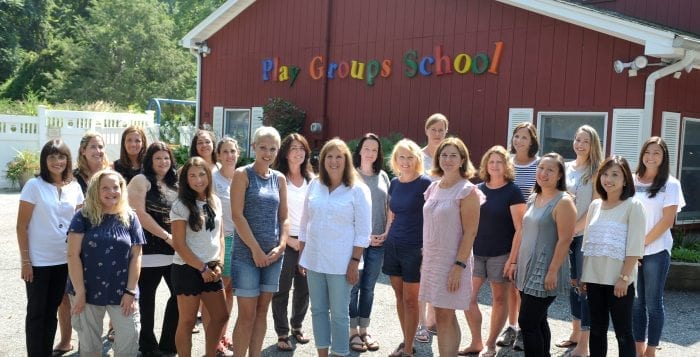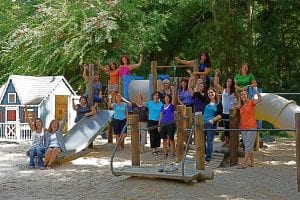By Melissa Arnold
Long Island’s own Billy Joel was once quoted as saying, “Music is an explosive expression of humanity. It’s something we are all touched by, no matter what culture we’re from.”
The Stony Brook University Orchestra has spent decades working to broaden musical appreciation and exposure not just on campus, but in the community as well. Each year, their Family Orchestra Concert invites people of all ages, including young children, to join them for an hour-long performance full of interesting compositions and audience engagement.

Dr. Susan Deaver is celebrating her 20th year as the orchestra’s conductor and an artist-in-residence at Stony Brook. With careful planning, Deaver programs each concert around a unique theme. “Brainstorming new themes is certainly a creative process. A particular piece might give me an idea, or some aspect of the music can inspire me,” she explained.
This year’s theme, titled Orchestral Contrasts, will showcase differences in orchestral sounds and musical styles.”There are so many contrasts in music to explore — tempo, instruments, dynamics, moods, character, even different types of composers,” said Deaver, adding that the audience will get to experience this with the strings, woodwind, brass and percussion sections.
The orchestra is comprised of 79 undergraduates, 1 graduate student, four teaching assistants and four high school students from the University Orchestra’s Young Artist Orchestral Program who were invited to participate for college credit. While the group does contain music majors and minors, most members are pursuing other fields. To accommodate everyone, the members rehearses just one evening a week for three hours.
“I have students that are studying biomedical engineering, computer science, astronomy, psychology, and many other subjects — the common thread among them is that they all love music and want to continue to be involved in it,” Deaver said.
An annual highlight of the orchestra concert is a performance from a special young guest — the winner of the Young Artist Program’s Concerto Competition. Since 1996, Stony Brook’s Young Artists Program has allowed students in grades 3 through 12 the chance to hone their musical skills and meet other young musicians, all under the guidance of Stony Brook staff. Most students participate on the weekends, while a separate program is available during the summer.
“The concerto competition began years ago as a way of giving our students the opportunity to play with the university,” said Michael Hershkowitz, Stony Brook’s director of concerts and executive director of community programs, including the Young Artists Program.
The concerto winner can be a student of any age and instrument type. Each hopeful soloist performs for a panel of three judges, which includes Deaver and two impartial judges. Past performers have been violinists, cellists, pianists, winds players, and even vocalists.
This year’s winner is 16-year-old violinist Sophie Bowden, a junior at St. Anthony’s High School in South Huntington. She will perform the first movement of Violin Concerto No. 3 in B minor, Op. 61 by French Romantic composer Charles-Camille Saint-Saens.
“I like to express myself through my violin, and I like how it puts a smile on the faces of others. I perform a lot at nursing homes, especially during the holidays, where residents aren’t able to go out and see concerts. Bringing live, upbeat music to them does a lot to ease their depression; the vibe changes immediately,” said Bowden, who has played the violin since she was just 4 years old.
Bowden, who said she is thrilled to have been chosen, admitted the audition process for the concerto competition was nerve-racking. While she’s had smaller solos in the past, this will be her first time performing as a soloist with an orchestra.
“Working with the university orchestra has really been a fun, challenging, and rewarding experience. I found that playing this particular concerto with a full orchestra was much more difficult than playing it with a single piano accompanist. The Saint-Saens concerto is a romantic period composition, so it’s less structured and restrained than metered works of the Baroque era,” Bowden explained. “For everyone to stay together, we must listen closely and watch the conductor more than usual. Fortunately for me, the university orchestra has many extremely competent players, and Ms. Deaver has been very supportive.”
Hershkowitz said that the concert provides a fun and accessible opportunity to learn more about orchestral music and what it’s like to be part of an orchestra.
“There aren’t a lot of concerts out there that are meant for families, and that’s what makes this event so special — it’s not too long, you don’t have to worry about whether or not the kids are going to ‘make it’ through the experience. We don’t concern ourselves with concert etiquette, so it’s OK if a child wants to ask a question, gets up from their seat or makes noise,” he explained. “It’s about giving everyone a chance to have an experience with a full orchestra, to watch a conductor in action, to learn a little about different instruments and to hear the music change.”
The 2020 Family Orchestra Concert will be held at 7:30 p.m. on Tuesday, March 3 on the Staller Center’s Main Stage at Stony Brook University, 100 Nicolls Road, Stony Brook. Tickets are $5. To purchase or learn more, call the box office at 631-632-ARTS or visit www.stonybrook.edu/music.
Photos courtesy of Sophie Bowden






 Blatant discrimination began to give way to steering; black house hunters were shown homes only in minority or integrated areas while whites were shown houses in overwhelmingly white areas. As people of color began to buy homes in mostly white areas, block busting by real estate brokers took advantage of the situation by scaring white homeowners into selling their homes at lowered prices.
Blatant discrimination began to give way to steering; black house hunters were shown homes only in minority or integrated areas while whites were shown houses in overwhelmingly white areas. As people of color began to buy homes in mostly white areas, block busting by real estate brokers took advantage of the situation by scaring white homeowners into selling their homes at lowered prices.






 The Play Groups saga began in 1944 when a group of parents decided to organize a “play group” where their children could learn through play with their peers. According to Brookhaven Town Historian Barbara Russell, whose brother was a member of the group in 1949, the children met at a small cottage near the Old Field Club. Perhaps that is why it was called the Old Field Nursery School in the early days. The first teachers were Dora Underwood of Port Jefferson and Joan Cockshutt of Setauket.
The Play Groups saga began in 1944 when a group of parents decided to organize a “play group” where their children could learn through play with their peers. According to Brookhaven Town Historian Barbara Russell, whose brother was a member of the group in 1949, the children met at a small cottage near the Old Field Club. Perhaps that is why it was called the Old Field Nursery School in the early days. The first teachers were Dora Underwood of Port Jefferson and Joan Cockshutt of Setauket. “It has been my honor and privilege to lead Play Groups School these many years,” said Friedman. “While striving to stay abreast of current research and best practices, some things
“It has been my honor and privilege to lead Play Groups School these many years,” said Friedman. “While striving to stay abreast of current research and best practices, some things





